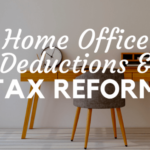Crosstown Commercial / January 17, 2022
Commercial Leases: What You Should Know About NNN, FSG, and MG
Acronyms abound in all industries, and in commercial real estate, it’s no different. You should know several acronyms if you are trying to get into the business. In particular, you should make sure you understand the following (we’ve alphabetized the list for simplicity).
- CAM – Common area maintenance
- CMA – Comparative market analysis
- DCR – Debt coverage ratio
- FSG – Full-service gross lease
- LOI – Letter of intent
- LTV – Loan-to-value
- MG – Modified gross lease
- NNN – Triple net lease
- NOI – Net operating income
- REIT – Real estate investment trust
- ROI – Return in investment
- USF – Usable square footage
Though all of these terms and others we haven’t listed are important for you to know, we will focus on NNN, FSG, and MG for this article. These acronyms all refer to lease structures, and if you’re going to make money in the business, you need to know your options.
The 3 Critical Lease Structures You Should Know in Commercial Real Estate
Triple Net Leases – The NNN
Let’s start with the NNN. These leases are typically found in the retail space and for standalone properties. But recently, we have seen these lease structures making their way into the office and industrial spaces. In these leases, the tenants cover their share of the following fees, along with their base rent, utilities, and any necessary maintenance for their premises.
- Common area maintenance (CAM)
- Property taxes
- Building insurance
However, we often get asked why tenants would want to accept responsibility for these expenses. But in reality, this triple structure is quite suitable for both the tenant and landlord. Tenants like the NNN structure because they know that any additional rent they put towards the maintenance of the common areas will go to good use. Similarly, landlords like this structure because any increases in property taxes, building insurance, common area maintenance, etc., will get passed on directly to the tenant.
This all said, landlords, don’t profit on the pass-through fees. Tenants can audit those fees each year, which ensures landlords don’t forego the quality of maintenance or upkeep on the property. As a result, both tenants and landlords are left with the aesthetically pleasing and well-maintained property. This is a win-win for all.
Full-Service Gross Leases – The FSG
The next lease structure you should understand is the FSG. These types of leases are typically seen in office buildings. But you’ll also find this structure in industrial centers and in lower-end retail centers. Newer and more unsophisticated landlords often use this commercial real estate lease structure because it is straightforward. Essentially, FSG means just what it sounds like – it covers all expenses.
In these leases, the tenants pay one fee to the landlord and the landlord pays all expenses for the property, including the following:
- Common area maintenance (CAM)
- Utilities
- Janitorial expenses
Landlords or any property management company they retain will manage any work that needs to be addressed in or around the property. This could include something as simple as a light bulb change or as involved as a detailed furnace repair. No matter what it is, the landlord is responsible for ensuring the job gets done at no incremental expense to the tenant. But, there can be some problems with this structure as sometimes landlords get in over their heads. When this happens, properties can start to fall into disrepair, and tenants can begin to leave.
Modified Gross Leases – The MG
No, we’re not talking about the British automobile. Here, we’re talking about the modified gross lease. And the best way to explain it is that the MG is a hybrid of both the NNN and the FSG. In this lease agreement, the tenant pays base rent at the beginning of the lease. But, the tenant will take on an equal share of other costs tied to the property. These costs include property taxes, utilities, insurance, and maintenance. It’s really up to the landlord and tenant to determine the terms of the lease and ensure proper documentation with the help of a savvy real estate attorney.
Modified gross leases offer exceptional flexibility when negotiating the terms of the commercial real estate deal. The landlord often finds it easier to set up these leases based on how the property was built or how things were arranged before they acquired it. Further, many landlords appreciate the opportunity to cover more controllable costs like insurance and share or pass on more variable expenses like utilities. MG leases are prevalent in all types of commercial real estate deals and often serve as an excellent compromise to help close a deal.
Know Your Commercial Real Estate Lease Options
It’s really up to you on what structure you should use. As with many things in life and business, it really just depends. There are positives and negatives to all three structures that we outlined. The best advice we can offer is that you consult with your commercial broker, real estate attorney, and CPA to make sure you make the choice best for you and your commercial real estate goals.






























